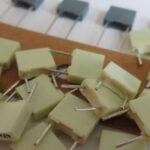The Db Major chord, often written as D♭ Major, is a fundamental chord in guitar playing, cropping up in various musical genres. While none of its constituent notes are found on open guitar strings, making barre chords the go-to method for playing it, understanding and mastering the Db chord opens up a wider range of musical possibilities on the fretboard.
Delving into D Flat Chord Theory
To truly grasp the Db Major chord, a little theory goes a long way. Here’s a breakdown:
- Chord Notes: The Db Major chord is composed of three notes: D♭, F, and A♭.
- Scale Foundation: It’s built upon the Db Major scale, using the 1st (root), 3rd, and 5th degrees. Exploring the Db Major scale can deepen your understanding of the chord’s context.
- Interval Structure: Like all Major chords, Db Major follows a specific interval pattern from its root: Major 3rd, minor 3rd, and Perfect 4th (returning to the root).
- Key Context: In the key of Db Major, the Db chord naturally harmonizes with chords like E♭m, Fm, Gb, Ab, B♭m, and C diminished.
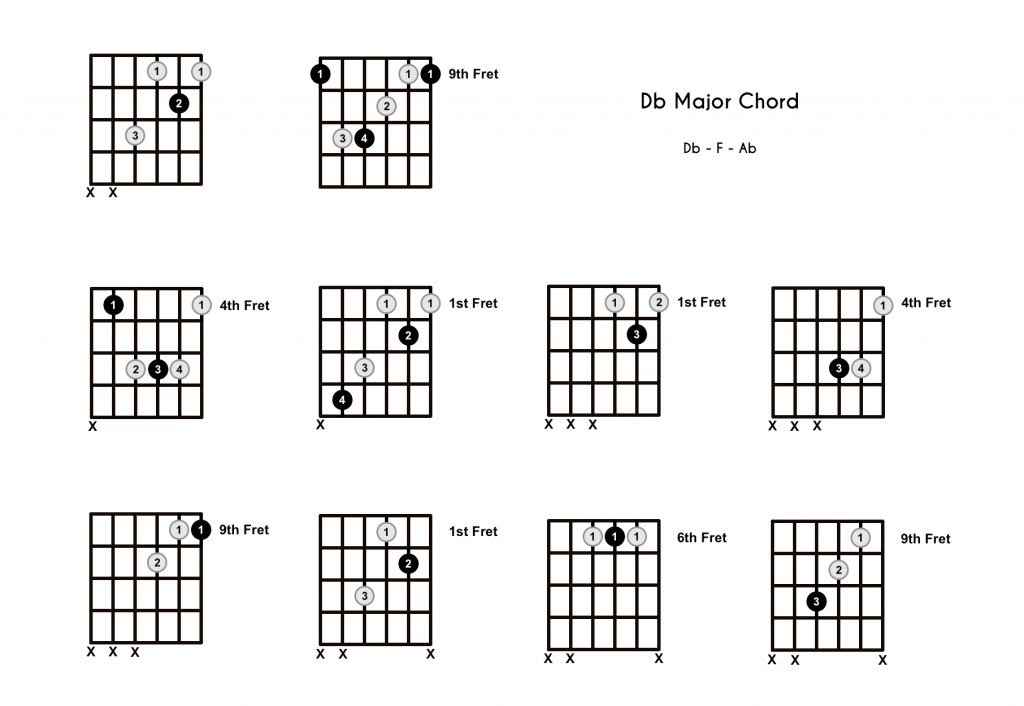 Db Major Chord – 10 Shapes
Db Major Chord – 10 Shapes
The Standard Db Chord Shape: Root-5 Barre
The most frequently used shape for the Db chord is a barre chord, specifically the root-5 barre form. This is typically played starting at the 4th fret. Interestingly, in many instances of this shape, the index finger might not fully barre across all strings, but rather focus on pressing down the root note on the 5th string.
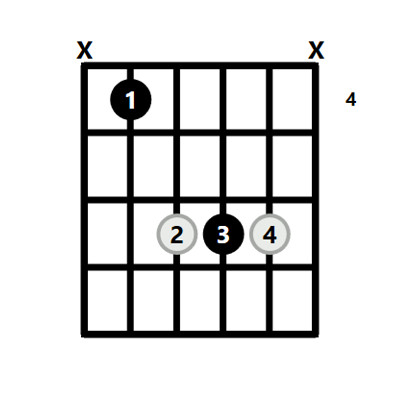 Db Chord Guitar
Db Chord Guitar
The Easy Db Chord Shape: A Beginner-Friendly Approach
For guitarists who are just starting out or find barre chords challenging, there’s a simplified version of the Db chord. This “easy” Db chord is played on just the top three strings. It mirrors the shape of the open D chord, but shifted down one fret. This makes it an accessible entry point to incorporating the Db chord into your playing.
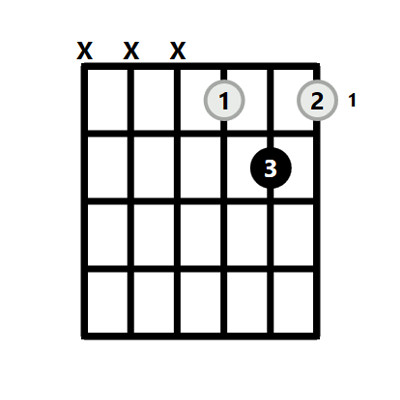 Easy Db Chord Guitar
Easy Db Chord Guitar
Step-by-Step Guide: Playing the Standard Db Major Chord
If you’re unsure about finger placement for the standard Db Major chord, follow these instructions:
- Index Finger: Place your 1st finger on the 4th fret of the 5th string (A string).
- Middle Finger: Position your 2nd finger on the 6th fret of the 4th string (D string).
- Ring Finger: Place your 3rd finger on the 6th fret of the 3rd string (G string).
- Pinky Finger: Place your 4th finger on the 6th fret of the 2nd string (B string).
- Strumming: Avoid strumming the 6th string (low E string), and strum downwards across the top five strings.
These step-by-step instructions are particularly useful for ensuring correct finger placement and can be a helpful checklist when learning this essential chord shape.
Exploring Barre Chord Shapes for D Flat
Beyond the standard root-5 barre, the Db chord is also readily playable using root-6 barre chord shapes. You can play a root 6 barre shape starting at the 9th fret, or the root 5 barre shape as previously mentioned starting at the 4th fret. Barre chords provide a movable and versatile way to play the Db chord and many other chords across the guitar neck.
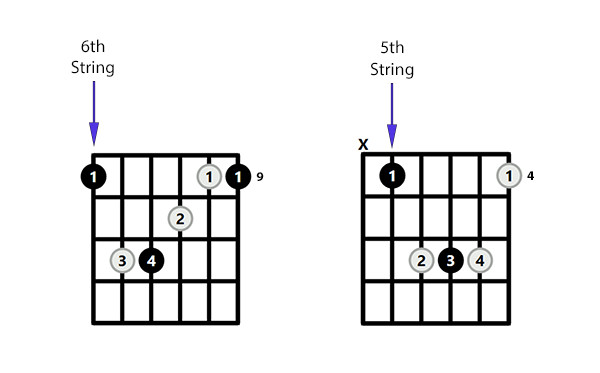 Db Barre Chord Guitar
Db Barre Chord Guitar
Unpacking Db Major Triads
While barre chords are common for Db Major, exploring triads offers another dimension. Triads are three-note chords and are valuable for understanding chord construction and creating different voicings. The Db Major triad has three inversions:
- Root Position: D♭, F, A♭
- 1st Inversion: F, A♭, D♭
- 2nd Inversion: A♭, D♭, F
These inversions offer varied sonic textures and can be used to create smoother transitions between chords. Here are some shapes to play Db Major triads:
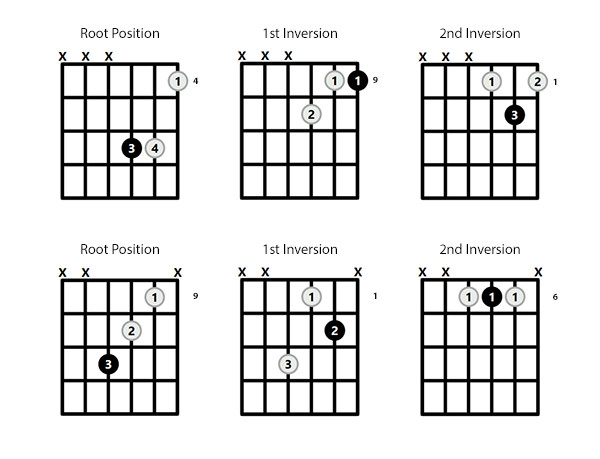 Db Major Triad Guitar
Db Major Triad Guitar
Keys Where the Db Chord Resides
Understanding the keys where the Db chord naturally occurs will enhance your musical understanding and songwriting. You’ll find the Db Major chord in these keys:
- Db Major: (Db, E♭m, Fm, Gb, Ab, B♭m, Cdim) – As the root key, Db is the tonic chord.
- Ab Major: (Ab, B♭m, Cm, Db, Eb, Fm, Gdim) – Db is the IV chord in Ab Major.
- Gb Major: (Gb, A♭m, B♭m, Cb, Db, E♭m, Fdim) – Db is the V chord in Gb Major.
- B♭ minor: (B♭m, Cdim, Db, E♭m, Fm, Gb, Ab) – Db is the III chord in B♭ minor.
- F minor: (Fm, Gdim, Ab, B♭m, Cm, Db, Eb) – Db is the VI chord in F minor.
- E♭ minor: (E♭m, Fdim, Gb, A♭m, B♭m, Cb, Db) – Db is the VII chord in E♭ minor.
Alternative and Useful Db Chord Shapes
Beyond the common shapes, there are less frequent but still useful alternative ways to play the Db Major chord. These variations can provide different voicings and fingerings, adding color to your playing.
Db Chord Substitutions: Expanding Your Harmonic Palette
The Db chord is harmonically rich and can be substituted with related chords to create interesting variations. Consider using:
- Db sus 4: Creates a suspended and open sound. (Db sus 4 chord)
- Db sus 2: Another suspended variation, with a slightly different feel. (Db sus 2 chord)
- Db add 9: Adds a bright and airy quality. (Db add 9 chord)
Conversely, the Db Major chord itself can act as a substitute for more complex chords like Db Major 7 or Db7, especially in simpler musical contexts. However, it’s not a suitable substitute for minor chords.
Scales for Soloing and Melody Creation Over Db
When improvising or writing melodies over a Db Major chord, certain scales will sound particularly harmonious. Effective scales include:
- Db Major Scale: The most natural choice, outlining the chord tones perfectly.
- Db Mixolydian Mode: A major scale with a flattened 7th, adding a bluesy or dominant flavor.
Further Exploration
To deepen your guitar chord knowledge, consider exploring resources like “Guitar Chords Galore eBook” for a comprehensive guide to chords and chord voicings.
 Get Guitar Chords Galore eBook
Get Guitar Chords Galore eBook
Promotional banner for a guitar chords eBook, encouraging further learning and skill development.

